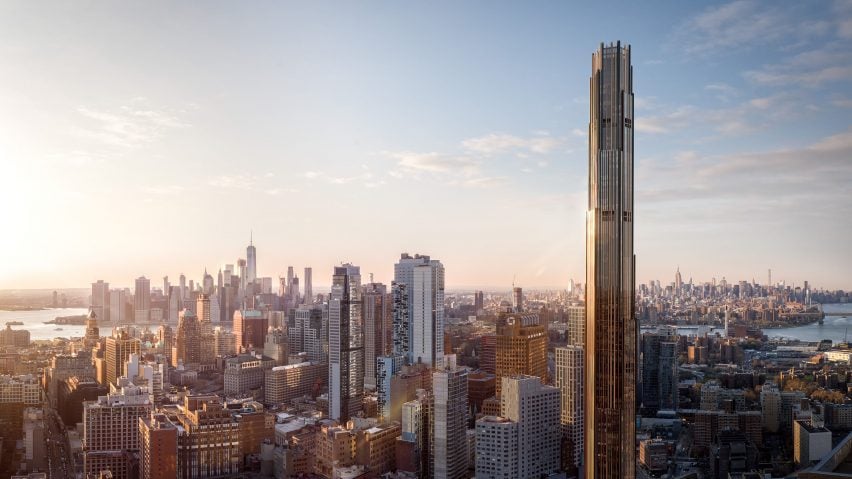
SHoP Architects principal knew Brooklyn Tower would be "like the Empire State Building of Brooklyn"
Early adoption of digital technology and the competitive nature of working in the architectural "pressure cooker" of New York City helped SHoP Architects become successful, say principals Gregg Pasquarelli and John Cerone in this interview.
Pasquarelli, one of five architects who founded SHoP Architects 1996, and Cerone, an employee since 2008 and principal since 2020, spoke to Dezeen about the origins of the studio whose recent projects include the Brooklyn Tower and 111 W 57th, the skinniest supertall skyscraper in the world.
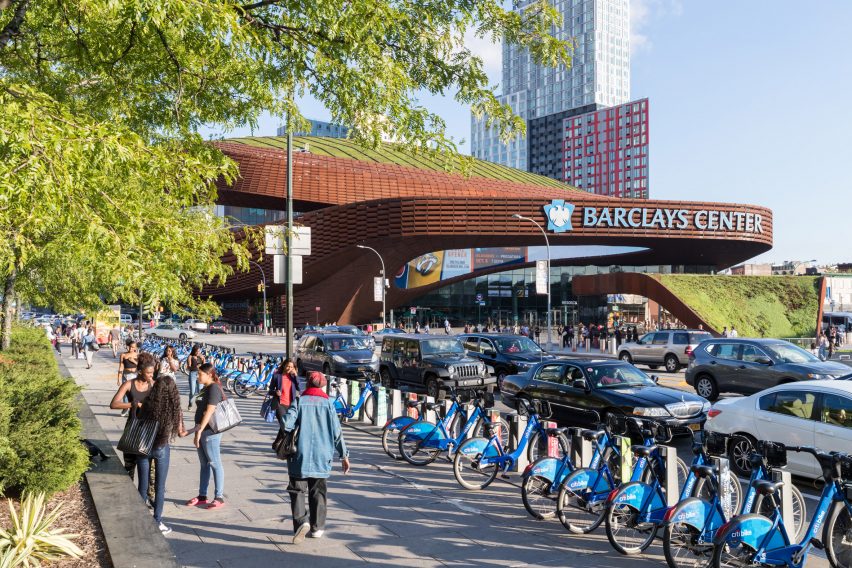
Brooklyn Tower, which recently topped out at 325 metres, is now one of Brooklyn's most recognisable landmarks thanks in part to special zoning which means it is visible from almost anywhere in the borough.
"This building – which is the only zoned for that kind of height – we knew would be kind of like the Empire State Building of Brooklyn," said Pasquarelli.
"We wanted to make sure that no matter what grid you were on, looking at it from wherever you were in Brooklyn, you felt like you were looking at the front."
He added that architects should be making "serious architecture in Brooklyn" and not just in Manhattan.
"Two of the top-five buildings in Brooklyn"
"Why should Brooklyn have a second-grade tower? It's got a real skyline. It's a fantastic place to live," he said. "I'm proud that we did that building and I'm proud that we did the Barclays Center," he said, in reference to the studio's 19,000-seater sports arena that opened in 2012.
"Maybe with the Brooklyn Museum, the Wonder Wheel, and the Brooklyn Bridge, we got two of the top five buildings in Brooklyn, and I'm super proud."
The principals relate the success they have had in the city of New York to SHoP’s early implementation of digital technologies in the architectural process, a willingness to work closely with developers and the competitive nature of the city, which Pasquarelli referred to as an architectural "pressure cooker".
"The intensity of New York and the people here really affect the program," said Pasquarelli.
"New York is always changing. Nothing is permanent, but it needs to be authentic and people can tell when something is forced, not authentic," added Cerone.
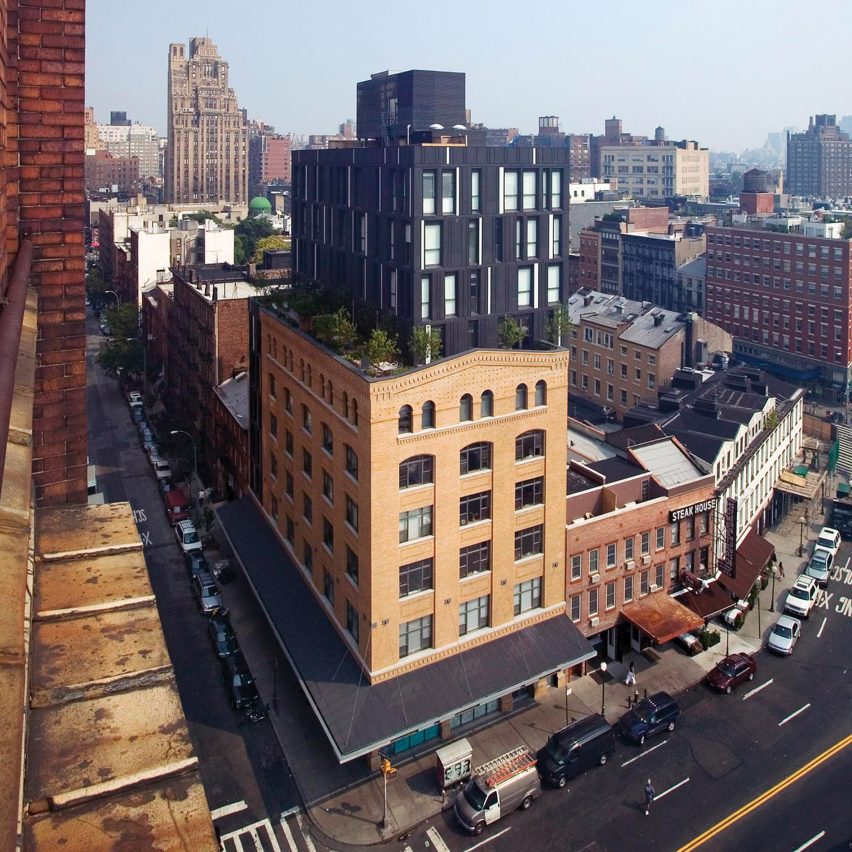
SHoP adopted technologies early on that allowed them to digitally plan the fabrication of ornate facades like at the Barclays Center, and at Porter House, a building with a custom-fabricated facade that is cantilevered off an older building in the Meatpacking District of Manhattan.
Creating highly detailed fabrication plans and even at times helping to cover the cost of the experimental methods help prove the approach to developers.
"We were like, look this is New York," said Pasquarelli of the early days of the firm. "We're all fighting over every inch of this island. If we don't engage and speak in the language of the developers, we're not going to ever really be able to build and push the limits of what we can do."
Pasquarelli said the technology allowed the studio to deliver on design expectations by coming up with schematic models that not only showed what the buildings would look like, but how to build them.
"I was hoping journalists would do a rendering versus reality critique of the last 20 years and like go back against all my competitors and show what their renderings look like and what the building looks like at the end," he said.
"And rate the architects on how well they deliver what they promise, because I know we will win that competition."
Tech for the sake of beautiful buildings
For Cerone, who specializes in production technology, the technology is a means to an end and a way to avoid being "gimmicky".
"All the technology is not for the sake of technology itself but for making these beautiful buildings significant," said Cerone, adding that the studio was in the process of perfecting a system that would allow for a digital database to provide contractors and developers with a library of specs and fabrication elements for each aspect of SHoP's designs.
While the team emphasized the importance of streamlining production and communicating with developers to increase efficiency, they also acknowledged the wealth disparity that some of the projects represent.
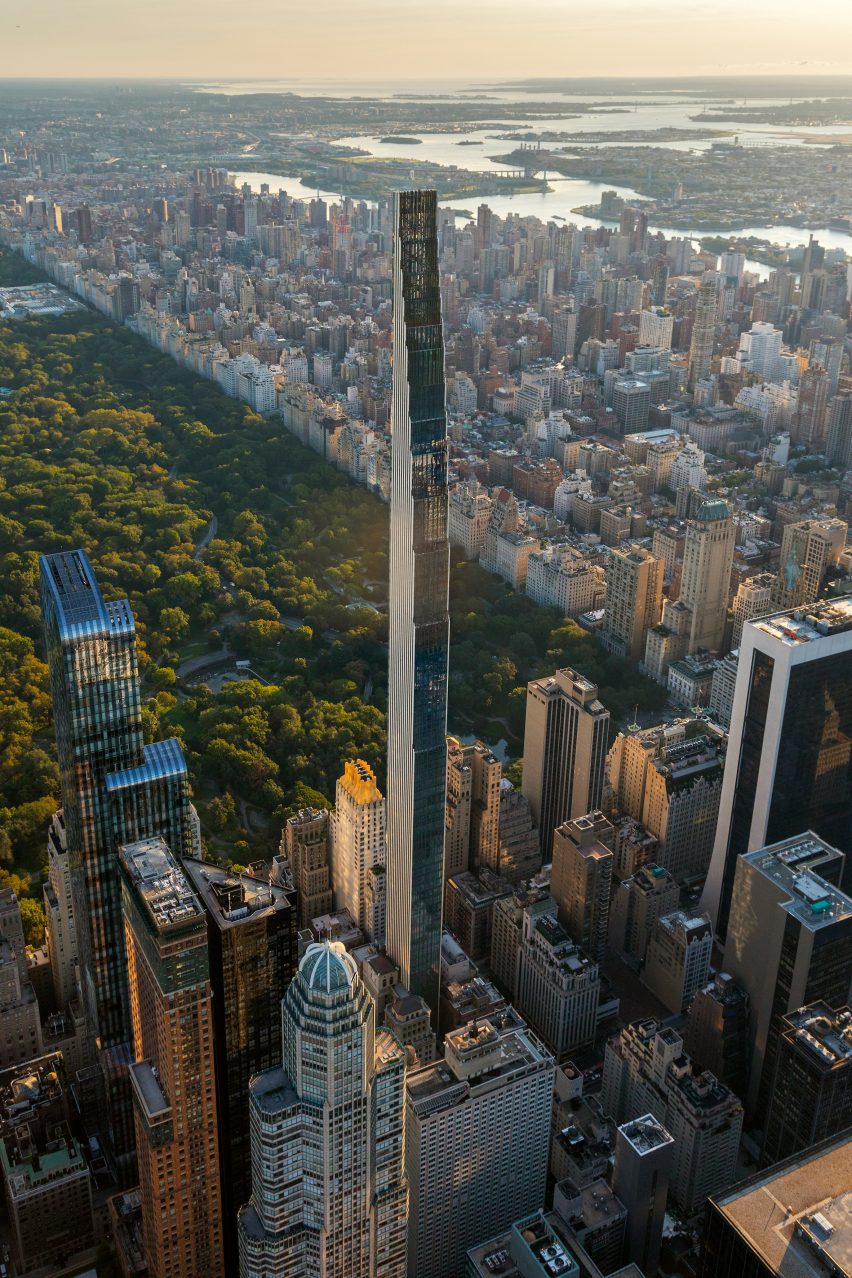
"I'm a New Yorker, and I care about the city and I know there are people that don't like Billionaire's Row," said Pasquarelli. "I get that wealth disparity argument, but, if they're gonna go up – and they're gonna go up – make it the best ones possible."
"Both with the Brooklyn Tower and with 111 W 57th Street, we took the position with our client that though extraordinarily wealthy people are going to live inside of this building, eight million of us have to live with it every day," he continued. "So you need to spend at least as much money on the outside as you do on the inside."
They said that processes and technology drive them to create buildings that adapt to the place.
"People take selfies at Barclays and then they turn around and then take selfies down the street with the Brooklyn Tower," said Cerone. "They don't know they are by the same architects."
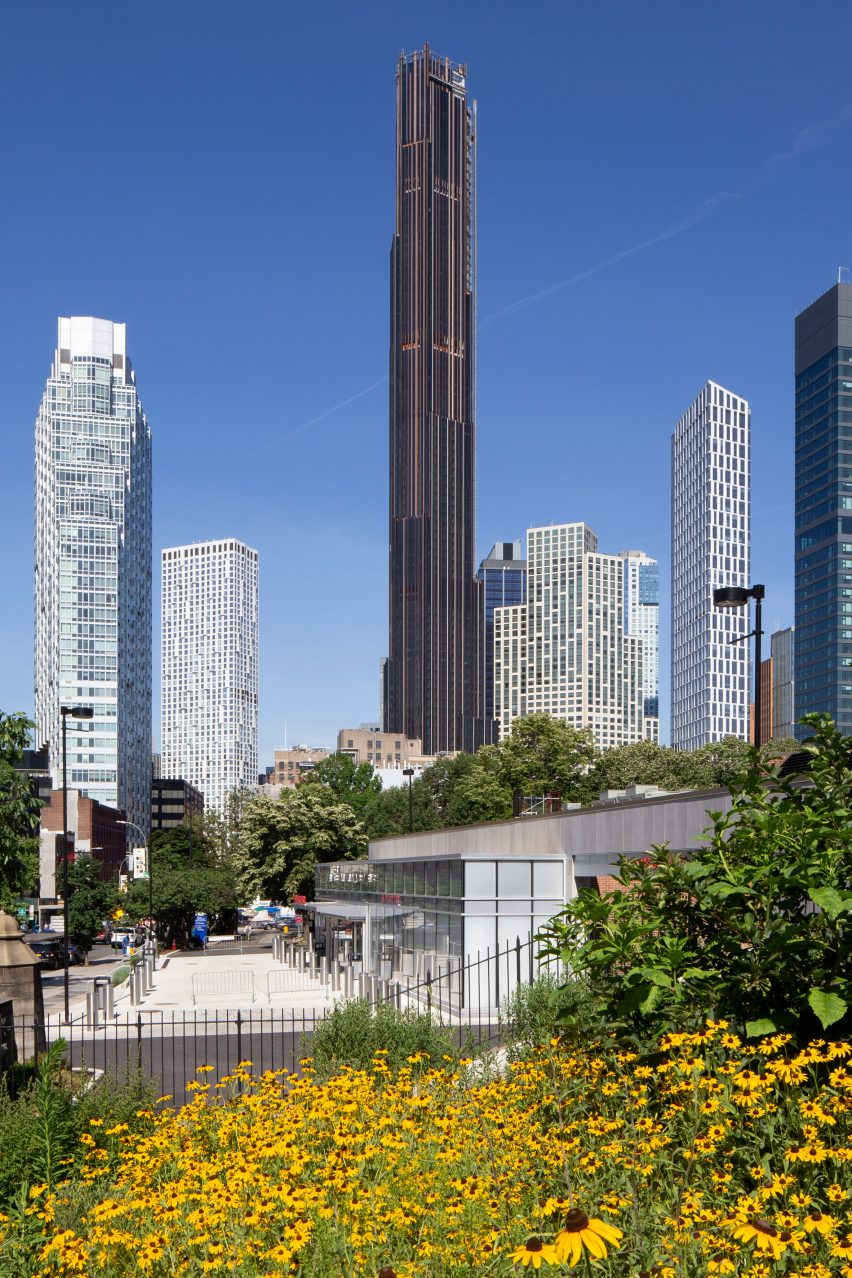
While New York is no longer the primary focus of the firm, the principals believe that their methods and styles, varied in form and function, have made a mark on the city and allowed them to prove themselves to international clients.
The studio's global buildings include embassies in Milan and Bangkok, a sprawling government complex in Botswana and a Dutch skyscraper that takes cues from the Brooklyn Tower.
"So we focused, for the first decade or so, on New York. And once we proved that we could build them, then we just started saying well now, can you do it in other places – can you do it in Africa, and can Asia do it?" said Pasquarelli.
"And it's just now getting out there."
Read on for the edited interview:
Ben Dreith: What has it meant to start designing in New York as student and wind up being responsible for some of the most talked-about buildings in the city?
Gregg Pasquarelli: I think we started at a very odd time; there was a big recession in the 1990s. And I was part of the beginning of using the digital to design like using animation software. We were using some of the first 3D printers. We were at the very beginning of the digital and saw how it was going to transform things. And some of the people we worked for were using it, like Frank Gehry and Greg Lynn, but they were using it for drawing.
We very early on wanted to work in New York. We all went to Columbia. We wanted to start here, we wanted to learn in the pressure cooker of New York, like not only how to make radical buildings, but buildings that made financial sense and also buildings that you couldn't make.
So these crazy shapes were coming but the question was 'how do we extract that information out into something beautiful?'. We were very early into laser cutters and 3d printers and some of our early work was experimentation on the extraction of the digital into the visible.
Also, there was always an idea that working with developers was bad and to watch out for it. We were like, look this is New York. We're all fighting over every inch of this island. If we don't engage and speak in the language of the developers, we're not going to ever really be able to build and push the limits of what we can do. So instead of blaming them for being difficult, we speak their language and inspire them to do better, that was very much at the firm at the beginning.
Ben Dreith: It's so popular now doing digital renders and it's you know, it's just pretty much the mainstream. What was the reaction when you first came to developers with these ideas?
Gregg Pasquarelli: They thought we were completely nuts. Virgin Atlantic hired us for the first class lounge at JFK, and we digitally made the screens. We were dealing with The Port Authority guys, and they were kind of like 'you can't build this' and we said 'yeah, you can't but robots can.' And they said 'don't you tell me how to build.' Then like five or eight years later, you're with the same guys and they were like, 'Oh, we'll get a five-axis mill robot to carve that.'
Between 1998 and 2006, the whole world changed in its understanding of using that technology. We believed in it, but it was a way for us to be able to compete with firms that were much older and had more resources. 'They're too old to understand the computer. So let's take that to our advantage to try and be able to build these buildings,' we said.
So using these digital tools started with PS1. It started at our park on the east end of Long Island. And we did an experimental building there, a camera obscura, which was the first building where every single part of the building was digitally fabricated in this little pavilion. And then it goes to the Porter House, which was the first development building we did in Meatpacking District and was the first time an entire facade was digitally fabricated, and then that technology leads directly to being able to pull the Barclay Center.
We were put in that pressure cooker in New York, and had to be highly theoretical, highly radical in design, but super competent, and, and straightforward and financially responsible.
Ben Dreith: John, you began around the time of Barclays. Was the technological approach something that attracted you to the firm?
John Cerone: The ethos of the firm is what brought me. Modelling for design was relatively new in undergrad. But people were getting into [3D] modelling to make renderings. I realized you could use modelling for instruction. There were no other places that were genuinely using these tools for production. And that distinguished itself. So I was brought in for production technology, of using it not just for renderers – we had renderers – but as a way to communicate with people making the buildings so take our design models, use the tools to create instructions for how to make pieces.
Gregg Pasquarelli: We learned very early on that this idea of plan section and elevation is a bad way to communicate. So you've got people who are architects who are thinking incredibly well in three dimensions, and then we reduce this information to a 2D section, handing it to other people who understand what you're trying to do, then they have to extract that. We were like why are we pushing it through this process? When we can take the digital that's got all this other information and invent new ways of communicating. And if we didn't, there's no way these buildings get built. And to do it in the pressure cooker of New York was the proof that we had to go through. So we focused for the first decade or so on New York. And once we proved that we could build them. Then we just started saying well now can you do it in other places can you do in Africa, and Asia can do it? And like it's just now getting out there.
Ben Dreith: Your building types cover many different uses. Does this come from New York? From building for the city rather than kind of building a typology?
Gregg Pasquarelli: In New York, every street is different. Every corner is different. Every neighbourhood is different. You get on that street and there's that energy. That's what makes it an interesting place. And so maybe there's a similar way that we think about architecture in the sense that it's like if we're just doing towers, or we're just doing libraries, or we're just doing parks, or we're just doing NBA arenas, or airports, it's seeing the same thing all the time, why do that? What's interesting is every time coming out with a fresh approach, How do I solve a problem? Not how do I repeat the technology? I think that just comes from being New Yorkers. We love that.
Ben Dreith: Coupled with technological innovation, why is it important for you to maintain historical aspects like maintaining the bank for the Brooklyn Tower or using terracotta for 111 W 57?
Gregg Pasquarelli: I did grow up here and there's this background, there's a fabric that exists. Restoring a building is a pain in the ass, right? I also think that it's part of the DNA that helps drive the design of the building, right? But what can we extract from what's here, its context, its history, the narrative, the story, all that stuff to drive us to make something new and fresh, that looks back and forward simultaneously? So I kind of love having a historic building on the site, because it gives you a kind of texture that you can draw from. And I find that super interesting. I love seeing these towers that feel like they're part of a historic building but are not. That contradiction in New York.
Ben Dreith: How does the technological approach still leave room for the human element?
Gregg Pasquarelli: One of our buildings gets done and it's like you're looking at it and you're like, wow, that feels like an incredible accomplishment. I always see people around our buildings and they're smiling or they're pointing or they're yelling at me. A building for us doesn't end when the building hits the sidewalk. Right? Like, and this might be a New York thing, too. It's like, there are these neighbourhoods and stuff is happening and there's infrastructure and subway in parks and open space and light hits differently. And the building drops into this energy and it radiates energy out. I like to think of the building as the mediator between these two energies.
John Cerone: So all the technology is not for the sake of technology itself but for making these beautiful buildings significant.
Gregg Pasquarelli: And the intensity of New York and the people here really affect the program.
John Cerone: New York is always changing. Nothing is permanent, but it needs to be authentic and people can tell when something is forced, not authentic.
Ben Dreith: The Barclays Center is such a public space, it's so seen and used by the public. How do you feel about the contrast between that and something like the Brooklyn Tower, which everyone sees, but then has an aspect of being more closed?
Gregg Pasquarelli: One is private and one is a public forum, so they're going to be different. Both with the Brooklyn Tower and with 111 W 57th Street, we took the position with our client that though extraordinarily wealthy people are going to live inside of this building, eight million of us have to live with it every day. So you need to spend at least as much money on the outside as you do on the inside. We need to think about the detailing and the materiality and the way that the building is viewed from all over as much as we think about how the apartments are laid out. And I think also saving the two landmark buildings and making them publicly accessible and integrated into the building, as opposed to knocking them down and building a fortress with like doorman and security on the outside allows a certain amount of interaction.
So there's the interaction at 40 feet there's the interaction from a block away. There's the interaction from 10 blocks away. There's the interaction flying in LaGuardia, seeing buildings on the skyline, and thinking about them that all those levels are super important. On 111, because it's in Manhattan, and it's a grid, you always know the primary and secondary way the building is going to be viewed. And that's why the terracotta is on two sides and the glass is on the other. In Brooklyn, all the grids are different, right? They all collide. And this building, which is the only one zoned for that kind of height, we knew would be kind of like the Empire State Building of Brooklyn. We wanted to make sure that no matter what grid you were on, looking at it from wherever you were in Brooklyn, you felt like you were looking at the front. And so the interlocking hexagons of the building kind of gave it that ability that you never felt like you were looking at the side or the back and the other thing that that did was you're always looking at two facades in the oblique. And so by putting the texture on the building, it made the building look solid, not all glass, and we felt that that was important. To see that solid building gives you the kind of gravitas on the skyline and it becomes this anchor, it becomes an orienting device and that was a huge part of how we were thinking about what it needed to do when it radiates out from the center.
Ben Dreith: Especially when it's competing with towers in Manhattan.
Gregg Pasquarelli: Why should Brooklyn have a second-grade tower? It's got a real skyline. It's a fantastic place to live. No, make serious architecture here. I'm proud that we did that building and I'm proud that we did the Barclays Center. Maybe with the Brooklyn Museum, the Wonder Wheel, and the Brooklyn Bridge, we got two of the top five buildings in Brooklyn, and I'm super proud.
Ben Dreith: How does it feel for you and for everyone involved to work on these buildings?
Gregg Pasquarelli: It's amazing. I mean, our team is from all over the world. I lived in Queens when the original World Trade Center was going up, and I could see the construction from my bedroom window. And I kept the LEGO model of the Trade Center as they were building it, so I was like looking at towers as a little boy. It's amazing how unbelievably proud I am of these buildings I’ve worked on because I'm a New Yorker, and I care about the city and I know some people don't like Billionaire's Row. I get that wealth disparity argument, but, if they're gonna go up, and they're gonna go up, make it the best one possible.
John Cerone:
I live right by there. People take selfies at Barclays and then they turn around and then take selfies down the street with the Brooklyn Tower. They don't know they are by the same architects. But then those are the things that drive their interests and that's what works and fits the design. It's the process. People think things made with technology need to look a certain way. And they don’t. They can fit into the fabric and take on different forms and styles. No one would think terracotta, this historical material, would be digitally fabricated, so shouldn’t it be "techie" looking? No, it looks incredibly elegant. It's certainly very sensual. It's very musical. It feels like a piano. It feels like a skyscraper. It feels like seduction, feels like material, it feels old and it feels new. Like that's when you're like okay, that technology got us there.
Ben Dreith: Now that technology has caught up to the rest of the field, do you still have the same resistance from developers?
Gregg Pasquarelli: Before we had to be like a total cheerleader, like rah rah technology. Now they're like, okay, I see how it works like, wow, that was smart. And we want that too. So it's, it's much easier to have. But I think it's still the narrative about the building. Narrative gets everyone excited, and then it is the technology that allows us to build it and make it work and get that kind of quality building.
John Cerone: They believe us at this point. They believe that the image that you're showing them, will look like this. It will.
Gregg Pasquarelli: And there's a whole side of the architecture in the design community that's like, 'why would you give to clients the power to make decisions?' It's the opposite. It was the same thing with the developers. Once we were in with them and they felt like they had skin in the game and like we were communicating, they let us design whenever we wanted.
I was hoping journalists would do a rendering versus reality critique of the last 20 years and like go back against all my competitors and show what their renderings look like and what the building looks like at the end. And rate the architects on how well they deliver what they promise because I know we will win that competition.
Ben Dreith: Are there any technologies that you're excited about that they're kind of novel for any upcoming projects or that you're kind of just starting to work with?
John Cerone: Visualization tools. We wanted to solve very hard problems first like how do we use computers to make millions of parts — that is arguably a hard part of the building. We went there first and then we realized that the industry isn't set up to automate a production pipeline. We still upload the drawings and all that. So we've been sort of on the sidelines behind the scenes making the technologies more accessible through applications. Now, if you log in, here's what the budget looks like, here’s the status of your project, and one we call a kind of cocktail hour app. Here's intuitive access to the project in real-time. Do we need to create a plan section and elevation and all these traditional things? No, here's a project and here's where it is under construction. If you'd like, there's more information in real-time. It’s communication with transparency. No one's gonna open up these 3D modelling tools; they shouldn't have to. Clients and collaborators don't need to know the thick models. It's interesting because creating more access and transparency to the projects through intuitive technology allows us to do more robust and deeper client-facing technology.
Gregg Pasquarelli: Who goes into these three hundred pages of drawings? They want to just see it. Like 'where am I? Where are my parks? Where's my facade? How many are up there?' And the same information goes to the facade manufacturer, the same information goes to the guy that is making the glass that goes into the facade, same information goes to the guy that makes the bolt that holds the glass into the facade. It makes it transparent for everyone.
John Cerone: We're allowing people to walk through their building two years before they exist. Early in the process, you’re seeing renderings that are like the end of the timeline. We could do it in concept in like the first month. They're inside their space and they can begin to make decisions, in much more interesting ways.
It's not gimmicky. You only reason you create any kind of technological solution was to solve some immediate problem quickly with a small team. So at the end of this, you have a roadmap. This is the way to do projects digitally. We're in cloud-based systems, we can do all of this work from here in New York design, you know, the project coordinated down to the bolt, and then send those things out.
Dezeen is on WeChat!
Click here to read the Chinese version of this article on Dezeen's official WeChat account, where we publish daily architecture and design news and projects in Simplified Chinese.